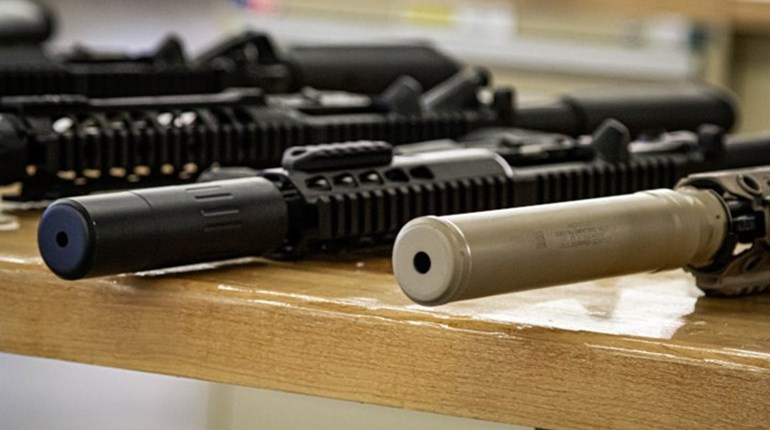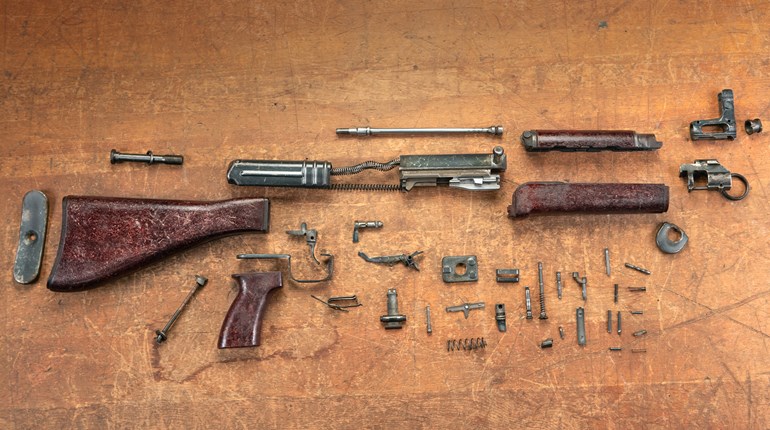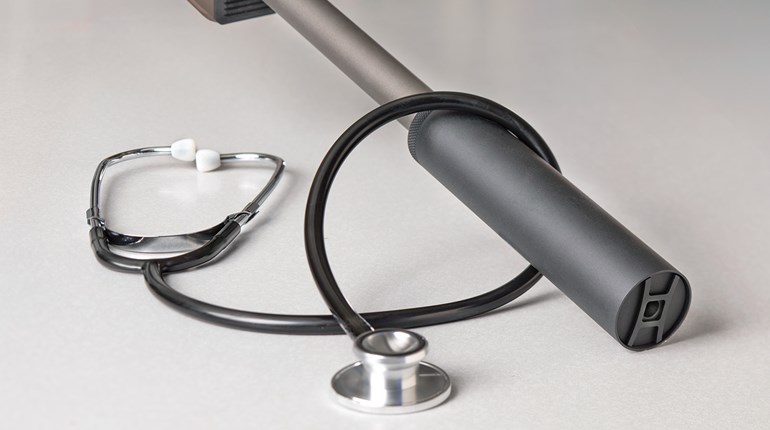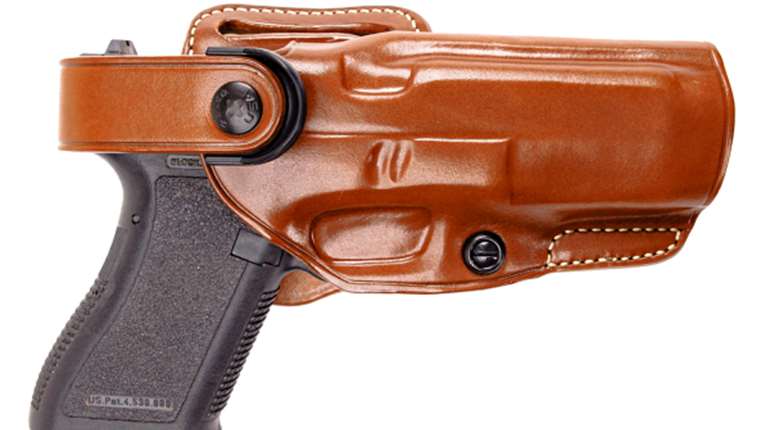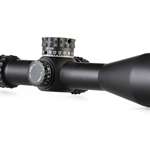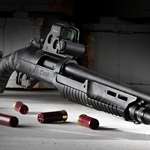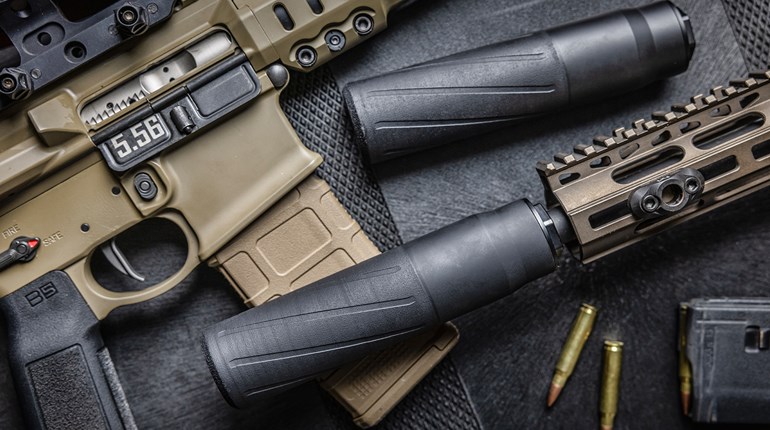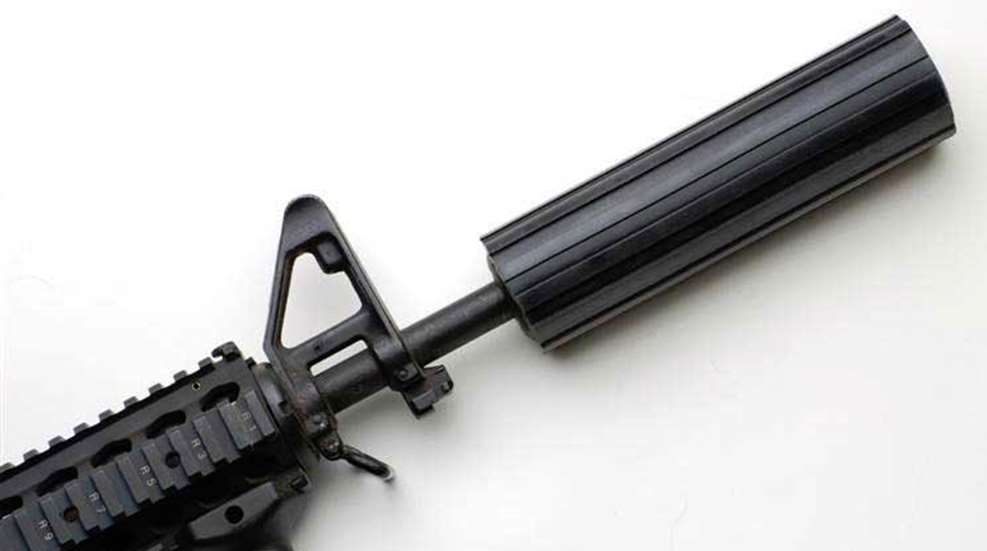
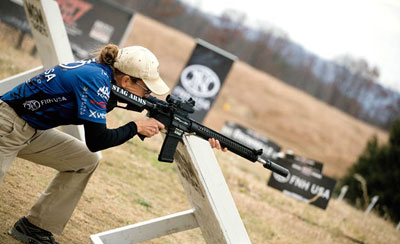
Suppressors are gaining popularity among shooters both in and out of the tactical realm. The increased interest in these useful accouterments should come as no surprise. Whether we are talking about boots, performance wear or guns, gear coveted by our nation's warfighters tends to be popular in the commercial market.
Much has changed in the world of sound suppression since I penned "The Truth About Suppressors" a few years ago. That article was based on my experiences with suppressors throughout my Army career. I added a Class II (manufacturer of NFA-regulated firearms) Special Occupational Tax (SOT) license to my business in 2010 and began testing new suppressors to better gauge the last few years' worth of developments. Overall, the "cans" available on today's market are definitely better in terms of pricing, availability and performance than those I used in service.
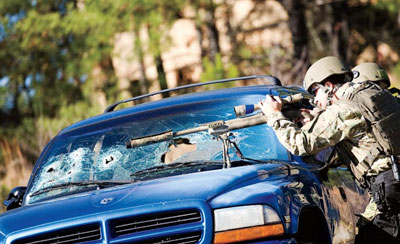
Sound suppressors are formally classified as "Silencers" under the National Firearms Act (NFA) of 1934. The Bureau of Alcohol, Tobacco, Firearms and Explosives (BATFE) is currently tasked with enforcing suppressor regulations in accordance with federal law. These devices are classified as a restricted "firearm" and each has its own serial number. The NFA is a real gem of depression-era, gangster-fueled legalese that makes the ownership, possession, use, transport and transfer of suppressors more complicated than the actual firearms with which they are used. While the regulations are cumbersome, once navigated successfully the payoff is a device that can make shooting more fun, safer for your ears, better for your relations with your neighbors and perhaps even result in tighter groups.
The Sound of Silence
Notwithstanding Hollywood depictions or the NFA naming scheme, these handy tools do not actually silence anything. They simply reduce audible sound to differing degrees. The best suppressors (with the right ammunition) make a gun's report sound like a high-pressure air release. Good suppressors make shots hard to discern among normal environmental noises. Bad cans may conceal the location from which a shot has been taken, but not the fact someone fired a gun.
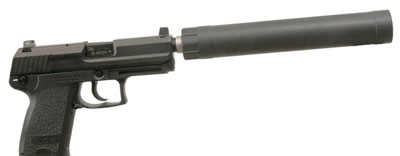
The measurable sound reduction happens at the muzzle only, which means sound escapes via the ejection port in a semi-automatic and projectiles still make noise on their way to the target. Low-powered specialty ammunition and/or a gas system that can be turned off are the usual ways to manage ejection-port sounds. Subsonic ammunition can be used to eliminate the sonic crack of bullets in flight, but it still make noise as it zips through the air. Some suppressors are designed to be used "wet"—the shooter has the choice of filling their baffle cavities with some form of liquid, usually water or other manufacturer-specified mediums—or "dry." While not very practical in the field, firing a wet suppressor will provide more sound suppression than when dry. Follow the manufacturer's instructions carefully if attempting to wet a suppressor. A friend of mine blew his AR into large pieces after filling his can improperly.
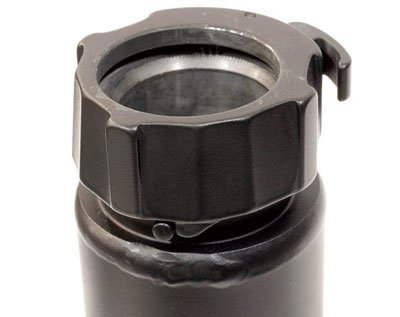
Suppressor sound reduction is usually expressed as sound pressure level (SPL) measured in decibels. Most suppressor manufacturers publish SPL either as a reduction from the unsuppressed sound or as a total decibel measurement. Other resources publish SPL measurements taken on various suppressor/firearm combinations. I take all such data with a grain of salt unless I know details of the actual testing. Differences in the type of sound meter used, microphone placement, calibration, weighting scales, ground surface and many other factors all make SPL testing of firearms a highly specialized task. Sound meters that will measure SPL in decibels are readily available, but most are for OSHA-type measurements only and are unsuitable for firearm testing. Government test facilities and some commercial labs use MIL-STD-1474D as the guideline for sound measurement. I recommend viewing all published suppressor data with the same skepticism you would toward muzzle velocity numbers printed on an ammo box.
Suppressors provide more benefits than simple sound reduction. Military shooters also enjoy the simultaneous reduction in the visual signature they provide. Early in the War on Terror, nearly all fighting Soldiers in my unit began using suppressors full-time on sniper and CQB guns. Other units with similar equipment were doing the same thing for the same reasons. The disadvantages of muzzle flash in a night fight need no explanation, and good suppressors function as excellent flash reducers. They also greatly decrease the signature created by dust and sand when firing prone. These reasons have compelled the U.S. military to increase the number of military-grade sound suppressors issued to combat troops. USSOCOM's recent award of a large contract for its family of muzzle brake suppressors to SureFire is a prime example of this effort.
Three Kinds of Can
I group suppressors into three categories: integral, thread-on and quick detachable (QD). I will briefly examine the pros and cons of each type, but as with any other firearm-related decision, each shooters' needs determine which suppressor best fits them based on firearm type, intended use and budget.
Integral
An integral suppressor is usually built around an existing rifle or pistol barrel. In most cases the attachment is permanent, though a few designs allow disassembly for maintenance. Integrals are extremely effective at reducing audible and visual firing signatures. The firearm's barrel is often ported at multiple locations, allowing expanding gasses to be siphoned off the barrel and dampened inside the suppressor's body. Some integral designs intentionally reduce the velocity of supersonic ammunition to subsonic levels. Permanently attached integrals cannot be replaced due to wear or damage without also replacing the barrel. That is an expensive prospect and in such cases the weapon system is normally reserved for special purposes. Integrals typically balance well due to their placement over the barrel's entire length, but also tend to run on the heavy side. The semi-custom nature of integrals can make them expensive to both purchase and maintain, but the market does provide some increasingly affordable options.
Thread-On
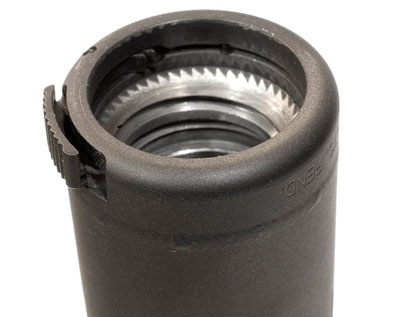
Once very common, threaded suppressors are slowly being relegated to second-class status behind their QD brethren. Most thread-ons are simply screwed tight, which can be difficult to regulate. Minor variations in tightness can affect a firearm's zero. This problem seems to be more pronounced with centerfire rifles, possibly due to higher pressures and vibrations generated by their cartridges. I have had a few thread-on rifle cans back off during firing over the years, despite being tightened exactly as the manufacturer prescribed. That is unacceptable in a tactical environment and potentially hazardous to anyone within close proximity. I have not had that problem with pistol suppressors, which are predominantly of this variety. Even given their weak points, some very good thread-on designs are available and prices can be particularly favorable when compared to other suppressors.
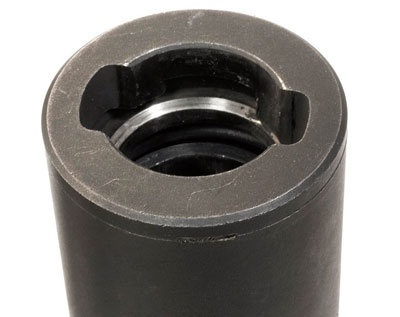
Quick Detachable
QD sound suppressors facilitate rapid changes in configuration whenever the situation requires maximum flexibility. They also provide a positive, repeatable index point when locked in. This index-ability is critical to minimizing the point-of-impact (POI) shift that is inevitable whenever you add a weight to the end of an already zeroed barrel. QDs have their flaws too, though. If not completely and securely locked in place, they tend to launch on the first round. That can be dangerous and as one of my former teammates learned, may lead to a lot of red tape when it happens while shooting from a helicopter over bad-guy land. Most QD designs require a flash-hider or muzzle-brake mount that provides the proper mating surface on long guns. The best mount designs provide a minimum of two separate mating surfaces that help keep suppressors aligned to the bore. QD suppressor prices are coming down as more companies attempt to get a piece of this popular pie.
The Downside
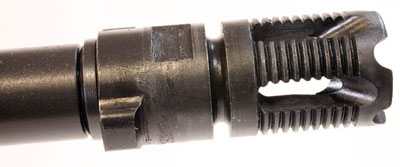
Beyond the quirks associated with each of the suppressor types listed above, their main Achilles heel is the effect they have on function. Pressure increases are a common result of suppressor attachment to centerfire rifles, which can be particularly problematic for self-loaders. A semi-automatic that relies on gas tapped from the barrel (via a port) to drive the operating system only needs a specific amount of that gas to function properly. The majority of excess gas normally expands out of the muzzle end of the barrel into the atmosphere after the projectile exists the bore. When that same gas suddenly crashes into a suppressor's baffles, some of it remains in the bore, expanding back into the gas system. The resulting greater force applied to the bolt may be more than needed to operate the action, and therefore can result in malfunctions.
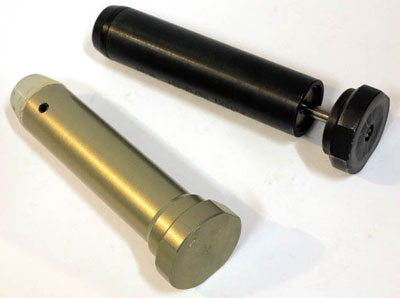
Some gun designs handle this better than others. Any semi-auto rifle intended for regular sound suppressor attachment will benefit from an adjustable gas block or regulator. Many of the modern, piston-driven semi-automatics have adjustable gas systems that allow for some modulation of pressure. By contrast, direct-gas-impingement systems (DGIS), as found on the original AR family of firearms, are typically nonadjustable. User-adjustable regulators from companies like JP Enterprises and Precision Reflex, Inc. are available as commercial retrofits, but they rely on setscrews for adjustment and lack positively indexed settings. Other options to tweak changes to bolt and carrier speeds including heavier bolt carriers, different buffer springs and changing buffer weights. I have found internal suppressor-design differences yield vastly different performance results on my own guns. It pays to do a bit of trial and error with your specific firearm and several ammunition types to see what your suppressed system likes.
Suppressors tend to trap more fouling from carbon and unburned powder in the firearm than is seen through normal firing. Depending on the specific suppressor model I am firing, my AR's DGIS system can become sluggish after anywhere from 30 to 300 rounds. Once the bolt-carrier group begins having trouble getting fully into battery, I know it needs to be cleaned soon because the problem will get worse as I go along. A key difference between fouling of DGIS and piston-operated guns is the location where the additional funk is deposited. DGIS systems will be much dirtier inside the upper receiver, while piston guns typically have more carbon inside the regulator or on the piston end.
Left-handed shooters tend to get a face full of gas, powder and oil when shooting a suppressor-equipped semi-automatic with a right-side ejection port. Back in my R&D days, it was not uncommon to fire 1,000-plus rounds through suppressed rifles in a single range session. I always spent a half-hour scrubbing and picking powder granules out of my face afterward. Eye protection should be used whenever shooting, but sound suppressors make shooting without eye pro dangerous even when everything is going right.
Suppressors are a lot of fun to use and more importantly, they can be very effective aids to your firearms. Unlike many European countries where they are encouraged or even required, U.S. law still seems to frown upon suppressor possession and use. That is an unfortunate throwback to a time when Tommy Gun-toting gangsters terrorized many U.S. cities. Even in states where suppressors are legal to possess, they are oftentimes not legal for hunting. I hope that as sound suppressors become more common in the civilian world, people recognize they are not some sortof sinister assassin's tool, but are instead useful aids to many different shooting pursuits.
For tips on running your suppressor, here are some of Steve Adelmann's tips.












